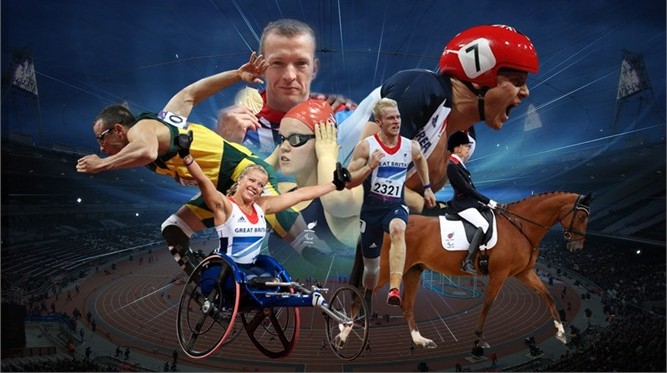After a heady summer of sporting success, a variety of Olympians currently enjoy their newfound celebrity by selling us overpriced products or appearing on a litany of reality television programmes. But what of the Paralympians? Some have enjoyed a bit of TV here, a little advertising there but not quite on the scale of their Olympic counterparts. Now the Paralympics are well in the realms of last year, what does the Paralympic legacy mean for disabled people working in the arts?
During the Paralympics, disabled stand-up comic Adam Hills provided the summary of the day’s coverage in his show The Last Leg with Adam Hills (he has a false leg). His mix of comedy and sports proved such a success, that Channel 4 have recommissioned it as a current affairs comedy programme airing in the popular slot of 9:30pm on Friday. Co-hosted with Alex Brooker (born with arm and hand deformities and a twisted leg) and Josh Widdicombe (not disabled) the panel speak about contemporary issues but with a disabled person’s perspective not found in much British television. This combination provides a welcome mainstream platform for both the disabled and non-disabled public to really engage with, some members of the live studio audience and people messaging in from Twitter themselves being disabled. Rare in an industry so worried about racial and gender diversity.
Disabled performers have been on the fringe for a long time
The UK’s mainstream theatre scene also has a striking lack of disabled performers, with the main outlets for disabled actors falling to speciality theatre companies like Graeae or Lung Ha’s. Directors often hide behind the excuse of unwanted themes and motifs or simply the disabled actor not being right for the part. Currently however, even disabled roles are frequently given to non-disabled actors; Arthur Darvill (of Dr Who fame) recently completed a run at London’s Duchess Theatre starring as a wheelchair bound ex-serviceman in Jonathon Lewis’ Our Boys. What good is staging disabled roles if non-disabled actors are cast in them?
In an article for the Guardian (August 2012), disabled playwright Katie O’Reilly speaks of a number of theatrical stereotypes disabled performers are often categorised into, stating the need for a change of perspective and the hope that the Paralympics will help to instigate this. But what sort of change will the Paralympics bring? The Performing Arts is often so aesthetically driven it almost legitimises the exclusion of disabled performers, to the point where directors can easily defend decisions to cast non-disabled performers in disabled roles. Of course there are some successful disabled performers but in this environment, will the inclusion of some disabled actors in mainstream performances ever really flourish? Disabled performers have been on the fringe for a long time. Perhaps then, for a real change of perspective in the wake of the Paralympics, rather than surrounding one or two disabled actors amongst multiple non-disabled actors, a move towards popularising more disability driven vehicles like The Last Leg with Adam Hills, is a direction that could hopefully see more disabled performers recognised at a mainstream level.
Follow Callum on Twitter @CWMadge
